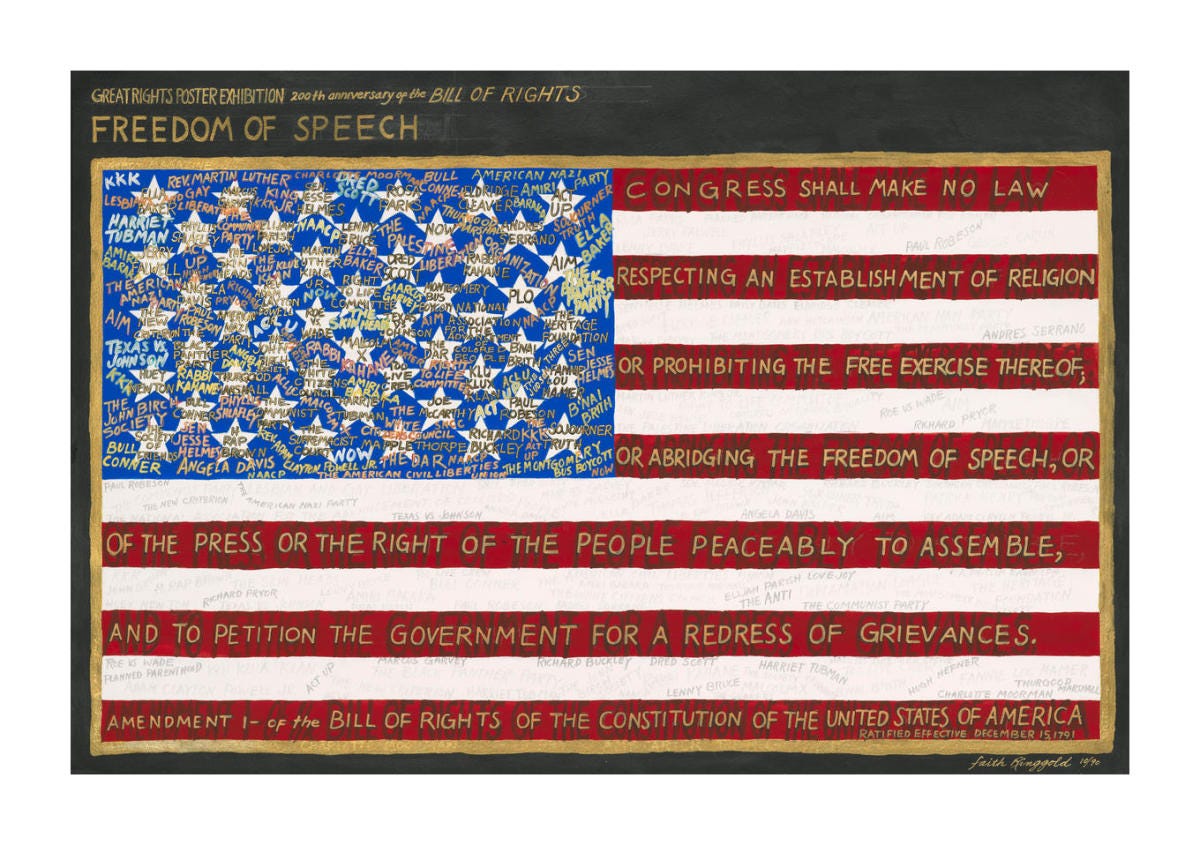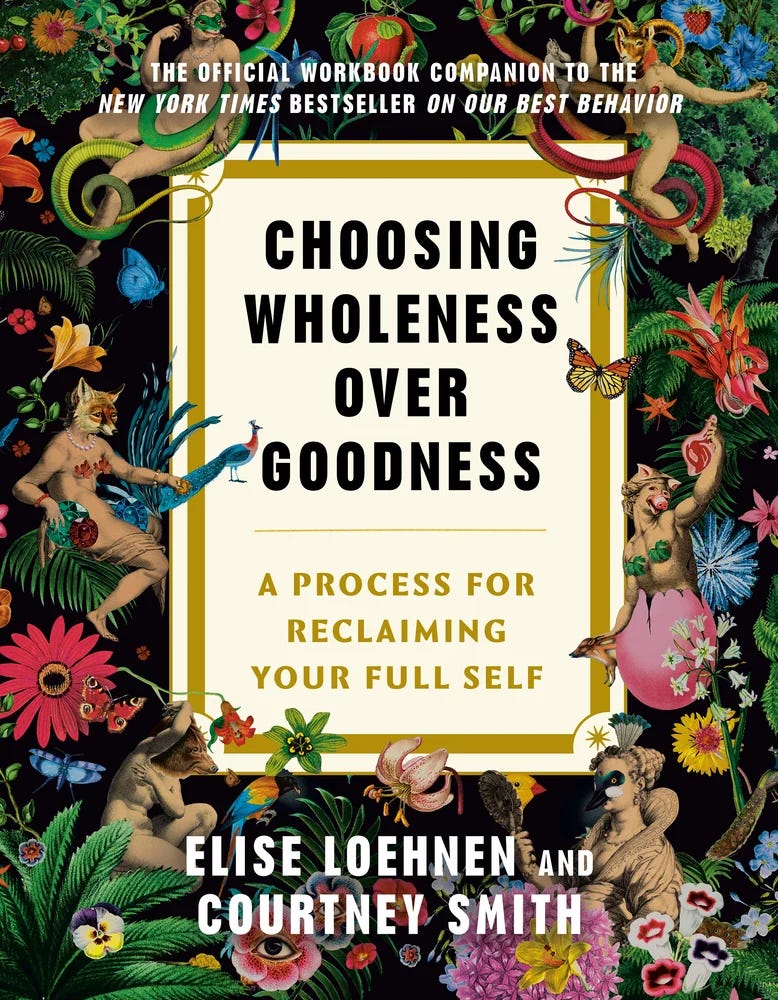Even though we’re a few months away from publishing our workbook, Choosing Wholeness Over Goodness (coming 8/26, you can pre-order it now—this is a great help!), my co-author (and dear friend) Courtney Smith and I went to NYC last week to test-drive a short workshop. While we love leading the full weekend, full process version*—give us time and space and we will take it—it’s always great practice to see what we an pack into an hour. As it turns out, we can actually do a lot.

I’ll share more about what we’re calling “The Core Process” in the coming months, but its first step, the step that we did with this small group, is something I’ve written about before. It’s called Fact versus Story, and in my experience, it’s one of the quickest and most profound ways to access your subconscious and understand how the stories you’re telling yourself about the world are informing the way you show up in said world.
We are meaning-making machines: In fact, our ability to make up and tell stories is one of our most powerful creative capacities—it creates our entire culture. In fact, everything I write about in On Our Best Behavior is a story: but these are stories that are passed down to us as truth, as “just the way things are” and how we need to be. A good woman is…never tired (SLOTH); subjugates what she wants to other peoples’ needs, in fact she probably doesn’t have any wants at all (ENVY); needs no attention, affirmation, or praise (PRIDE); thinks that money is for other people and not for her (GREED); is disciplined about food and her body, keeping the latter as small and restricted as possible (GLUTTONY); is sexy but not sexual, desirable but not desiring (LUST); and is never upset about any of this (ANGER). These are stories that we take in wholesale and turn into facts.

We run our lives on stories like this: In fact our identity structure, our ego, is essentially story. My name is Elise, I was born in Montana, I went to Yale, I write books, I host a podcast, I’m married to Rob, I’m a mother to Max and Sam, I have three cats—those are some of my facts. I’m a workaholic who has trouble delegating because I’m kind of a control freak; I’m ruled by scarcity and fear about money and feel like I’ll never have enough; I don’t think I’m an engaged enough mom because I don’t like to play with my kids; my oldest son’s learning differences mean he’ll always struggle; my husband and I both like to spend a lot of time alone, which must mean we’re doomed as a couple…those are all stories that I’ve told myself at times. Some of these are stories that I continue to grip tightly.
So what’s a fact? A fact is incontrovertible and indisputable: A fact is something that could be recorded on a video camera. A fact could also be a feeling that you have. (If you get into why you’re having that feeling, you’re in storyland—so, “I feel sad” is a fact, whereas “I feel sad because my oldest is going to a new school next year” is a story.)
So what’s a story? Everything else. Truly everything.
It’s safe to say that story is a wonderful thing until we take those stories as fact (particularly if they’re negative ones, which they frequently are), or try to convince other people that our stories are, in fact, facts. (“You’re a bad husband because you didn’t take out the trash” is a story, not a fact; most conflict is about our competing stories about facts, not actual facts.)
In this abbreviated workshop we took them through an exercise, which you can do with a friend. Set a timer for two minutes. You’ll each take a turn and then switch roles.
The first person follows the script, giving the second person a chance to answer.
Tell me a fact about yourself:
Tell me a story you make up about that fact:Thank you.
(Repeat this cycle until the timer goes off; switch roles.)
Having done this exercise a number of times with Courtney, the results are quite similar from group to group.
People are surprised by how close they feel to the other person, even if it’s a stranger, because it gets intimate fast. (People frequently cry.)
People are shocked by their stories and how quickly they can leap from a pretty basic fact into far-out territory. (I.e., “My child hasn’t returned my call,” goes straight to: My child doesn’t need me; my child is upset with me; my child is in a ditch somewhere, etc.
People feel that their stories are largely negative. (This has to do with fear and protective ego structures, which we explore in depth in the workbook.)
People say how hard it is to listen to peoples’ stories and be constrained to “Thank You” in response. This can be uncomfortable: We want to rush in to console, coach, counter, commiserate, or confirm their stories. (We also get into this in depth in the workbook.)
This process, in of itself, can be therapeutic, but as mentioned, it’s just the first step in the process that Courtney architected for the workbook—after all, once you make your stories conscious, you need to work with them, and that requires understanding how they’ve helped you survive, making them bigger, acting them out, thanking them for their service, and then letting them go.
You may as well start generating your stories now—it’s incredibly eye opening. (And if you’re still having trouble figuring out what they are, you can always call Anne Emerson, recent Pulling the Thread podcast guest, who specializes in limiting subconscious beliefs. She’s shown me many of my most formidable and sticky stories, including “I’m the only one who can do it right, so I should do it all” and “If I accept money from people, they own me.” Fun stories, right? The wonderful thing about this process is that we are all onions friends; you can keep going, and going, and going.
*Courtney and I are actively planning out the coming year after the workbook launch and will be popping into cities for shorter events as well as the big kahuna—if you’re interested in any option (a short evening event, a digital version of a workshop, or a longer, in-person workshop), drop a comment below with your requested city as this will help us gauge interest and plan.
See you next week! (Meanwhile, tomorrow’s episode on Pulling the Thread with
is a fun one—we dive into the I Ching, Carl Jung and synchronicity, building a big enough tent for the sacred and the scientific, and much more. Satya’s been on the podcast before to discuss her book, Quarterlife: “Navigating Quarterlife.” And we’ve led some New Year’s workshops together on the I Ching, which you can watch here, the link is at the bottom of the Q&A: “Contemplating the I Ching.”




Would love a shorter or longer workshop in the Twin Cities!
Hello! Yes so interested in attending an event of yours and I’m in LA. Are there any other opportunities to share space with you coming up?
Thank you for all you share and the brilliant, thought-provoking conversations you create. I look forward to your pods and posts every week.